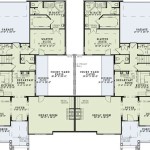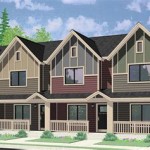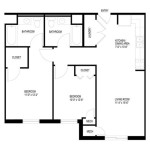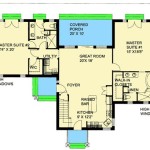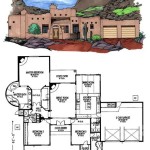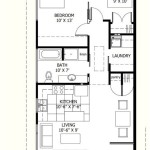House Design Plans: Maximizing Space in 1500 Sq Ft
Designing a house within a 1500 square foot (sq ft) footprint presents a unique set of challenges and opportunities. Efficient space utilization, thoughtful layout planning, and careful consideration of lifestyle needs become paramount. This article delves into the crucial aspects of designing house plans for 1500 sq ft, offering insights into optimizing functionality and aesthetics within these limitations.
The inherent constraint of 1500 sq ft necessitates a strategic approach to room allocation. Prioritization becomes key, focusing on the areas most important to the inhabitants. This may involve integrating living spaces, minimizing hallways, and incorporating multi-functional areas. A well-designed 1500 sq ft house can feel surprisingly spacious if planned effectively, offering a comfortable and functional living environment.
Understanding Lifestyle Needs and Prioritization
The design process begins with a thorough assessment of the inhabitants’ lifestyle. This involves understanding their daily routines, hobbies, work habits, and any specific needs, such as accessibility requirements. The number of occupants is a critical factor in determining the required number of bedrooms and bathrooms. A family with children will have different spatial needs compared to a retired couple.
Once lifestyle needs are defined, prioritization becomes essential. Determining which areas are most frequently used and hold the most significance helps allocate space accordingly. For example, a family that enjoys cooking may prioritize a larger, well-equipped kitchen, potentially sacrificing space in the formal dining area. Conversely, individuals working from home might dedicate more square footage to a home office.
Consider the potential for future needs as well. While the house may currently accommodate the existing occupants, anticipating future changes, such as expanding family or aging in place, can influence design decisions. Planning for adaptable spaces that can be easily reconfigured can enhance the long-term usability of the house.
Key Design Considerations for Optimized Space Utilization
Several design strategies can dramatically improve space utilization in a 1500 sq ft house. These include open-concept layouts, efficient circulation paths, strategic storage solutions, and the incorporation of natural light.
Open-concept layouts, where living, dining, and kitchen areas flow seamlessly into one another, eliminate the need for dividing walls, creating a sense of spaciousness and improved flow. This arrangement also facilitates better natural light distribution throughout the living area. However, careful consideration must be given to noise control and defining distinct zones within the open space.
Efficient circulation paths minimize wasted space in hallways and corridors. Designing direct routes between rooms and avoiding unnecessary turns maximizes usable square footage. Strategically placed doorways and openings can also contribute to a more fluid and efficient layout.
Storage is a critical aspect of space management. Built-in storage solutions, such as shelving, cabinets, and drawers, can effectively utilize vertical space and minimize clutter. Utilizing space under stairs, in attics, and above cabinets can also provide valuable additional storage. Multi-functional furniture, such as sofa beds and storage ottomans, can further optimize space utilization.
Natural light plays a significant role in creating a sense of spaciousness and airiness. Large windows, skylights, and light wells can bring natural light into the interior, making the space feel larger and more inviting. Proper placement of windows can also maximize solar gain in winter and minimize overheating in summer, contributing to energy efficiency.
Exploring Different Layout Options for a 1500 Sq Ft House
Various layout options exist for a 1500 sq ft house, each with its own advantages and disadvantages. The choice of layout depends on the specific needs and preferences of the inhabitants, as well as the site conditions and building codes.
A single-story ranch-style house provides ease of access and simplifies construction but may require a larger footprint. This layout is suitable for individuals with mobility issues or those who prefer single-level living. However, a larger lot is needed to accommodate the footprint.
A two-story house maximizes vertical space, allowing for a smaller footprint and a larger yard. This layout is suitable for smaller lots and can separate living areas from sleeping areas. However, stairs may pose a challenge for some individuals.
A split-level house offers a compromise between single-story and two-story layouts. This design features staggered floor levels, which can create distinct zones within the house while maintaining a sense of connection. Split-level houses can be particularly well-suited for sloping sites.
Considerations for each layout should include the placement of bedrooms, bathrooms, and living areas. The location of the kitchen and laundry room should also be carefully planned to optimize efficiency and convenience. Ensure that the layout complies with all relevant building codes and accessibility requirements.
Beyond structural layout, interior design elements contribute significantly to the perceived spaciousness and functionality of a 1500 sq ft home. The selection of colors, materials, and furniture plays a vital role in creating a cohesive and comfortable living environment.
Light colors tend to make a space feel larger and more open, while darker colors can create a sense of intimacy and warmth. Using a consistent color palette throughout the house can create a sense of flow and continuity. Strategic use of mirrors can also enhance the perception of space.
Choosing the right materials is essential for both aesthetics and durability. Durable and low-maintenance materials are particularly important in high-traffic areas. Consider using sustainable and eco-friendly materials to minimize the environmental impact of the house.
Furniture selection is crucial for maximizing space and functionality. Choose furniture that is appropriately sized for the rooms and avoid overcrowding. Multi-functional furniture, such as sofa beds and storage ottomans, can provide additional storage and seating options. Wall-mounted shelves and cabinets can also free up floor space.
Ultimately, successful house design plans for 1500 sq ft hinge on a comprehensive understanding of the inhabitants’ needs, a strategic approach to space utilization, and careful consideration of interior design elements. By prioritizing functionality and aesthetics, it is possible to create a comfortable and inviting living environment within these size constraints.
Careful planning and the right design choices can transform a 1500 sq ft house into a welcoming and functional home that meets the needs of its occupants for years to come. The key is to focus on maximizing space, optimizing functionality, and creating a cohesive and comfortable living environment.

30x50 House Plans 1500 Sq Ft Design 30 50 Plan East Facing

Traditional Plan 1 500 Square Feet 3 Bedrooms 2 Bathrooms 348 00018

10 Perfect 1500 Sq Ft House Plans Following Vastu Shastra

3 Bedrm 1500 Sq Ft European House Plan 123 1031

Ranch Plan 1 500 Square Feet 3 Bedrooms 2 Bathrooms 041 00057

House Plan 74275 Mediterranean Style With 1500 Sq Ft 3 Bed 2

House Plans Under 1500 Square Feet

How Do I Build The Best Home In An Area Of 1500 Square Feet 30x50

Bungalow Style House Plan 3 Beds 2 Baths 1500 Sq Ft 422 28 Small Plans Three Bedroom

1500 Sq Ft House Plans 4 Bhk In Plan Rjm Civil

